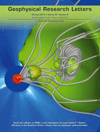
GEOPHYSICAL RESEARCH LETTERS
Scope & Guideline
Leading the Way in Geophysical Discovery.
Introduction
Aims and Scopes
- Earth System Science:
The journal publishes research that enhances understanding of the Earth system, including interactions between the atmosphere, oceans, cryosphere, and biosphere. - Climate Change and Variability:
Research addressing climate change impacts, variability, and feedback mechanisms is a core focus, with studies often utilizing both observational and modeling approaches. - Geophysical Hazards and Risks:
Papers covering seismic activity, volcanic eruptions, tsunamis, and other geophysical hazards are prominent, particularly those that assess risks and impacts on human systems. - Remote Sensing and Observational Techniques:
The journal emphasizes advancements in remote sensing technologies and observational methodologies for studying various geophysical phenomena. - Modeling and Simulation:
GRL includes studies that develop and apply models to simulate geophysical processes, enhancing predictive capabilities for future scenarios.
Trending and Emerging
- Artificial Intelligence and Machine Learning Applications:
There is an increasing trend in the application of AI and machine learning techniques to analyze complex geophysical data, optimize models, and improve predictive capabilities. - Climate Extremes and Variability:
Research focusing on the increasing frequency and intensity of climate extremes, such as heatwaves, floods, and droughts, is gaining traction, highlighting the urgent need for understanding and adaptation. - Interactions Between Climate Change and Ecosystems:
Emerging studies explore the interconnections between climate change impacts and ecosystem responses, particularly in sensitive regions such as the Arctic and tropical areas. - Subsurface Processes and Hydrogeology:
There is a growing emphasis on understanding subsurface processes, including groundwater dynamics, permafrost thaw, and their implications for climate and geophysical hazards. - Global and Regional Climate Modeling:
Advancements in global and regional climate models, particularly in simulating interactions between oceanic and atmospheric systems, are increasingly featured in the journal.
Declining or Waning
- Traditional Geophysical Methods:
There is a noticeable decline in papers solely focused on traditional geophysical methods, such as basic seismic analysis, as more advanced computational techniques and interdisciplinary approaches gain prominence. - Localized Case Studies:
The journal is seeing fewer localized case studies without broader implications or connections to global phenomena, as there is a growing emphasis on research with wider relevance. - Static Geological Models:
Research that relies heavily on static geological models without integrating dynamic processes or climate interactions appears to be waning, as the field moves towards more dynamic and integrative approaches.
Similar Journals

Acta Geodaetica et Geophysica
Innovating Research in Geology and GeophysicsActa Geodaetica et Geophysica is a prestigious journal published by Springer, focusing on the interdisciplinary domains of geodesy, geology, and geophysics. With an ISSN of 2213-5812 and E-ISSN of 2213-5820, this journal serves as a vital resource for researchers, professionals, and students interested in building and construction, as well as the broader aspects of Earth and planetary sciences. Operating since 2013 and poised to continue until 2024, Acta Geodaetica et Geophysica has consistently maintained its relevance within the academic community, evidenced by its Q3 quartile ranking in the fields of Building and Construction, Geology, and Geophysics for 2023. The journal's Scopus ranks highlight its competitive standing, ranking 118 out of 321 in Geology, and 66 out of 165 in Geophysics, reflecting its impactful contributions to the field. Although this journal does not offer open access, it remains an essential publication that enriches ongoing research and promotes knowledge dissemination in Hungary and beyond. Researchers and academics seeking to advance their studies will find valuable insights and rigorous analyses within its pages, making it a cornerstone of contemporary geoscience literature.

Solid Earth Sciences
Transforming knowledge into action for Earth's future.Solid Earth Sciences is a dynamic open-access journal published by Elsevier, dedicated to advancing our understanding of the Earth's subsurface processes and materials. Since its inception in 2016, the journal has established itself as a vital resource for researchers and professionals in the fields of geochemistry, petrology, geology, geophysics, and geotechnical engineering, achieving a notable Q2 ranking in multiple categories as of 2023. With an ISSN of 2451-912X, the journal aims to disseminate high-quality research that enhances knowledge of earth surface processes and the intricate interactions within our planet's systems. The journal is indexed in Scopus, showcasing an impressive rank in various sub-disciplines, with a rank of #96 in Geology and a noteworthy percentile in Earth and Planetary Sciences. Solid Earth Sciences offers a platform for innovative studies, comprehensive methodologies, and cutting-edge technological advancements that cater to a global audience of scientists, academics, and students. With its commitment to open access, it fosters wider dissemination and impact of research outcomes, ensuring that pivotal discoveries reach stakeholders and contribute to real-world applications.

GEOTECTONICS
Advancing Geoscience Through Rigorous Research.GEOTECTONICS is a distinguished academic journal published by PLEIADES PUBLISHING INC, focusing on key developments in the field of geology. Established in 1978, the journal has dedicated itself to exploring the intricate processes and phenomena associated with Earth's tectonic systems, making substantial contributions to Earth and Planetary Sciences. With an impressive impact factor reflected in its Q2 ranking within the Scopus category of Geology, GEOTECTONICS stands out as a valuable resource for researchers, professionals, and students alike. The journal offers a platform for rigorous peer-reviewed research that spans both fundamental theories and practical applications in geosciences, affirming its significance in fostering academic discourse and advancing geological knowledge. Although it currently does not offer open access, the journal's accessible format and continued publication through to 2024 ensures that it remains at the forefront of geoscientific inquiry.
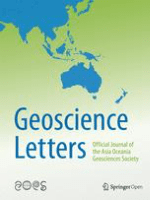
Geoscience Letters
Connecting Discoveries to Real-World SolutionsGeoscience Letters, published by Springer, is a prominent open-access journal in the field of Earth and Planetary Sciences, recognized for its dedication to advancing knowledge and research in this vital area of study. With a reported impact factor that reflects its esteemed position—ranking in the Q1 quartile of Earth and Planetary Sciences, particularly as the journal ranks #48 out of 195 in the general category according to Scopus—the journal serves as a vital resource for researchers, professionals, and students. Since its inception in 2014, Geoscience Letters has facilitated the dissemination of high-quality research and critical insights, aiming to bridge the gap between scientific discovery and societal needs. Its commitment to open access ensures that the latest findings are readily available to a global audience, thus enhancing collaboration and innovation within the geosciences community.
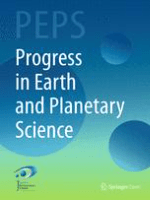
Progress in Earth and Planetary Science
Connecting researchers for a sustainable planetary future.Progress in Earth and Planetary Science is a premier open-access journal published by Springer, dedicated to advancing the field of Earth and planetary sciences. Since its inception in 2014, this journal has emerged as a prominent platform, achieving a Q1 ranking in the Earth and Planetary Sciences category, reflecting its high impact and rigorous peer-review process that ensures the highest quality of published research. With its broad scope encompassing diverse subfields within the Earth sciences, the journal aims to foster interdisciplinary collaboration and innovation among researchers, professionals, and students. The journal's commitment to accessibility through its open access model promotes the dissemination of knowledge globally, allowing critical research findings to be shared widely within the scientific community. Located in the United Kingdom, Progress in Earth and Planetary Science continues to play an essential role in shaping the future of Earth and planetary research from 2014 to 2024 and beyond.

Journal of Indian Geophysical Union
Connecting Minds, Unraveling Earth's SecretsThe Journal of Indian Geophysical Union, published by the Indian Geophysical Union (IGU), serves as a vital platform for disseminating research in the field of geophysics. With the ISSN 0257-7968, this journal primarily focuses on studies related to geophysical sciences, including but not limited to, seismicity, environmental geophysics, and geodynamics, contributing to a better understanding of the Earth's processes. The journal is committed to quality research and aims to foster a collaborative environment for researchers, professionals, and students in India and internationally. Although currently not designated as an Open Access publication, it plays an essential role in connecting academia with practical applications in geophysical research. Based in Hyderabad, India, the Journal of Indian Geophysical Union continues to be an essential resource for those seeking to expand their knowledge and engage with the latest findings in geophysics.
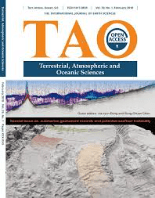
TERRESTRIAL ATMOSPHERIC AND OCEANIC SCIENCES
Transforming Insights into Actionable KnowledgeTERRESTRIAL ATMOSPHERIC AND OCEANIC SCIENCES, published by SpringerNature, is a distinguished peer-reviewed journal that has been an essential platform for innovative research in the fields of atmospheric science, oceanography, and Earth and planetary sciences since its inception. With an Open Access policy established in 1990, the journal ensures wide dissemination of knowledge, allowing researchers, professionals, and students to access cutting-edge findings without restrictions. Based in Switzerland and featuring a comprehensive coverage from 1996 to 2024, the journal currently holds a Q3 ranking across various categories, indicating its growing significance in the scientific community. Although it is positioned within the 39th percentile in Earth and Planetary Sciences, its commitment to fostering high-quality research makes it a valuable resource for advancing understanding of terrestrial environments and their interconnections. Researchers seeking a platform for their work in atmospheric and oceanic sciences will find TERRESTRIAL ATMOSPHERIC AND OCEANIC SCIENCES to be an ideal venue for sharing their insights with a global audience.

Geofizicheskiy Zhurnal-Geophysical Journal
Fostering Collaboration in Earth Surface DynamicsGeofizicheskiy Zhurnal-Geophysical Journal, published by the esteemed S I Subbotin Institute of Geophysics, National Academy of Sciences of Ukraine, stands as a vital resource for professionals and researchers in the field of geophysics. With an ISSN of 0203-3100 and an E-ISSN of 2524-1052, this journal is recognized for its rigorous peer-reviewed articles that delve into various aspects of geophysical research, including seismic studies, geodynamics, and Earth surface processes. Although currently not under an open access model, the journal maintains a commitment to disseminating high-quality research, thereby enriching the global geophysical community. The publication aims to foster collaboration and knowledge transfer among scientists and engineers while addressing complex geophysical challenges in a rapidly evolving landscape. By engaging with cutting-edge research, readers can expect to uncover insights that advance both theoretical understanding and practical applications in geophysical science.
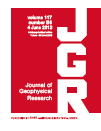
JOURNAL OF GEOPHYSICAL RESEARCH-SOLID EARTH
Elevating Scientific Discourse in Solid Earth ResearchJOURNAL OF GEOPHYSICAL RESEARCH-SOLID EARTH is a prestigious journal published by the American Geophysical Union, dedicated to advancing the study of solid Earth sciences. With an ISSN of 2169-9313 and E-ISSN of 2169-9356, it serves as a leading platform for rigorous research findings and innovative advancements within the fields of Earth and Planetary Sciences, Geochemistry and Petrology, Geophysics, and Space and Planetary Science. The journal has achieved an impressive Q1 quartile ranking across these categories, reflecting its high impact in the academic community and underscoring its role in influencing scientific discourse. Notably, it holds an esteemed position in Scopus, ranking 15th among 159 journals in Earth and Planetary Sciences (miscellaneous) as well as within the top 20 in several other geophysical domains. Researchers and practitioners are encouraged to contribute their work to this esteemed journal, which publishes comprehensive articles from 1979 to the present, thus providing a crucial repository of knowledge for those engaged in solid Earth research. Although it does not currently offer Open Access options, the journal's prestigious reputation ensures its articles reach a wide audience of academics, professionals, and students alike, fueling a deeper understanding of our planet's processes and challenges.

GEOSCIENCES JOURNAL
Fostering Collaboration in Geosciences for a Greener Tomorrow.Welcome to the GEOSCIENCES JOURNAL, a pivotal publication in the fields of Earth and Planetary Sciences and Environmental Science, proudly presented by the Geological Society of Korea. Established in 1997, this journal has become a prominent platform for researchers, professionals, and students, offering a rich collection of peer-reviewed articles that explore a diverse array of geoscientific topics. With an impressive Q2 ranking in both Earth and Planetary Sciences and Environmental Science categories for 2023, it stands as an essential resource in the academic community. Though it operates under a traditional subscription model, GEOSCIENCES JOURNAL remains dedicated to advancing knowledge through rigorous research. Addressed from its headquarters in Seoul, South Korea, the journal aims to foster a deeper understanding of geosciences, encouraging innovation and collaboration in tackling today’s environmental challenges.